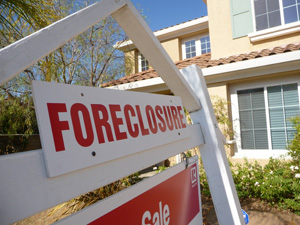A Fresh Solution to the Housing Crisis

The housing crisis is crushing the American Dream of home ownership. Legislation that burdens the American taxpayer has not materially alleviated the problem because, thus far, efforts have been focused solely on one segment of the marketplace – underwater homeowners. There is a fresh solution and it is relatively simple to implement – shrink the current glut of housing inventory by making it more accessible to all interested home sellers and home buyers.
In 2008, Harvard Professor Martin Feldstein reported that “More than 12 million homeowners now have mortgage debt that exceeds the value of their homes.” Less than a year later, Professor Feldstein wrote that “Today one-third of all homes with mortgages have mortgage debt that exceeds the value of the home.” By August, 2009, Deutsche Bank’s Karen Weaver concluded that the number of American homeowners that are underwater would spike to more than 50% by 2011. Professor Feldstein’s most recent Op-Ed, which appeared on October 12 in the New York Times, states that “Nearly 15 million homeowners owe more than their homes are worth[.]” Professor Feldstein concludes that, “Since the housing bubble burst in 2006, the wealth of American homeowners has fallen by some $9 trillion, or nearly 40 percent.”
Professor Feldstein advocates a government sponsored “mortgage replacement loan”. Under his plan, the government, lender and underwater homeowner would share in any loss associated with a write-down of the mortgage principal in exchange for a “full recourse loan”. Professor Feldstein’s idea is the kind of “outside-the-box” thinking necessary to effectively address the housing crisis. But his plan suffers from the same legislative and economic flaws as the materially ineffective government programs. There is a fresh solution, the essence of which requires interaction between and among the four groups directly impacted by the current housing glut:
(i) The “At-Risk Homeowner” who is currently underwater and suffocating in debt that will likely result in the default on his mortgage loan;
(ii) The “Non-At-Risk Homeowner” who wants, and can afford, to buy a more expensive house, but cannot do so because of the stagnant housing market;
(iii) The mortgage insurers, guarantors, banks and other lenders who hold “bad” mortgage notes that will only increase in number as the At-Risk Homeowner’s situation worsens. This group is powerless to protect their interests until expensive, time consuming, and sometimes problematic foreclosure proceedings are concluded; and
(iv) Investors holding mortgage-backed securities that are already significantly devalued.
With minimal effort, making the bloated housing inventory easily available to both the At-Risk and Non-At-Risk Homeowners can be facilitated by any lender, servicer or guarantor who is in control of a substantial housing inventory. For example, Fannie Mae, like all other mortgage lenders, has a significant inventory of houses. These houses are marketed via Fannie’s Homepath.com website. If Fannie made its housing inventory more accessible to all of its existing homeowners, both At-Risk and Non-At-Risk, it would begin to clear its aging housing inventory.
In the case of an At-Risk Homeowner who is financially willing and able to purchase a less expensive house listed on Fannie’s website, Fannie could remove that house from its inventory and take possession of the At-Risk-Homeowner’s vacated house before default and without the need for a foreclosure proceeding. In the case of a Non-At-Risk Homeowner financially willing and able to purchase a more expensive house in Fannie’s inventory, Fannie would permit him to transfer the equity accumulated in his current house (based upon a current valuation), to the new house. In each case, the At-Risk and Non-At-Risk Homeowners’ situation improves. Fannie’s situation, at worst, remains the same and, at best, significantly reduces its bloated housing inventory.
Underwater homeowners are a product of the housing crisis, not the cause. Rather than targeting recovery efforts to one segment of the marketplace, all homeowners must be given realistic alternatives to improve their current housing situation. In so doing, housing will stabilize and the as yet stymied economic recovery can begin in earnest.
If you need assistance in navigating the foreclosure process, or negotiating with your lender, please contact Kelly Law, P.C.
